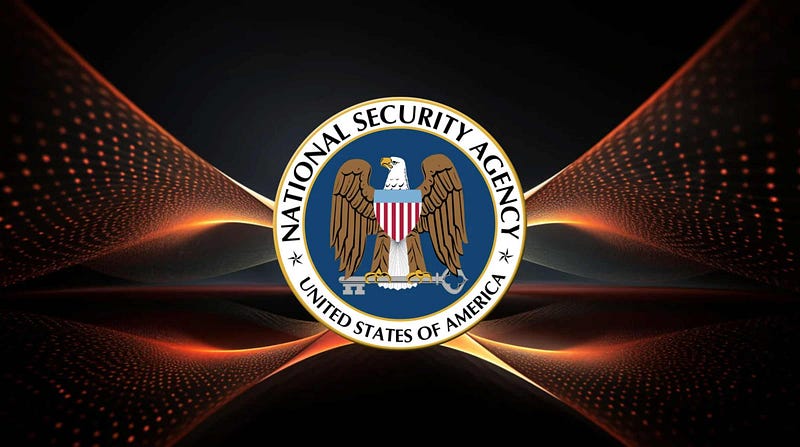641A. The Room That Wasn't Supposed To Exist
 Hmad
HmadIn 2006, a former AT&T technician quietly stepped forward with something few in cybersecurity were prepared to confront: evidence that the U.S. government had physically installed surveillance hardware directly into the backbone of the internet.
The room had a name; Room 641A. It was real, hidden in plain sight inside a major telecom hub in San Francisco. Its function was simple in concept, but staggering in implication: to intercept, duplicate, and analyse a vast portion of the internet’s traffic. Not from specific individuals under court order. From everyone.

The moment Mark Klein’s documents became public, a new era began, one where surveillance was not just suspected, but architected into the very networks we rely on.
Trust, Fiber, and the Anatomy of Interception
To understand the magnitude of what Room 641A represented, you first have to understand how the internet works, not as an abstract “cloud,” but as physical wires, cables, and routers that carry all of our digital communication.
Klein, a senior technician for AT&T, worked on these systems daily. While stationed at AT&T’s Folsom Street facility, he came across blueprints, fiber routing diagrams, and device configurations that didn’t make sense — unless you knew what you were looking for.
A device called a fiber splitter had been installed on several of AT&T’s critical peering links. This device is not exotic. In fact, it’s often used in telecommunications to duplicate optical signals for performance monitoring or backup purposes. But in this case, it was used to mirror all traffic on those lines and send it into a secure room that only NSA-cleared personnel could access
This room wasn’t part of AT&T’s normal architecture. According to internal documents, the room was outfitted with highly specialized equipment from a company called Narus, capable of capturing and analysing network traffic at scale.
In short: everything going through AT&T’s domestic internet links (emails, phone calls, web browsing, and VPN traffic) was quietly being copied.
Surveillance by Design, Not Intrusion
This wasn’t a story of hacking, phishing, or digital backdoors. It was something far more subtle, and in many ways more dangerous. Room 641A represented infrastructure-level surveillance, embedded physically into the internet itself.

It was surveillance by proximity, not permission. And this changed the conversation around privacy forever.
The implications were enormous. This wasn’t simply wiretapping a suspect. This was tapping the entire switchboard.
Technically, what was inside Room 641A allowed for both real-time monitoring and bulk data collection. The devices could reconstruct individual sessions, analyse patterns in behaviour, and extract metadata for storage or further scrutiny. It wasn’t just the NSA passively watching. It was a system designed to filter and select interesting traffic on the fly.
For cybersecurity professionals, this shattered a long-held assumption: that network infrastructure was neutral, and that threats came from the edge, from the attackers trying to break in, not from the middle.
Legal Gray Zones and Vanishing Accountability
When Klein went public, privacy advocates and digital rights organizations like the Electronic Frontier Foundation filed lawsuits. One of the most significant was Hepting v. AT&T, in which the EFF alleged that AT&T had violated federal law by assisting the NSA in conducting warrantless surveillance.

The response from the government was telling. Rather than deny the allegations, it invoked the State Secrets Privilege, a legal doctrine that allowed the case to be dismissed on national security grounds. The contents of Room 641A were never formally discussed in court.
A few years later, Congress passed the FISA Amendments Act of 2008. This gave retroactive legal immunity to telecom providers who had cooperated with surveillance programs.
In essence, the law not only legalized what had been done. It removed the possibility of future accountability.
This revealed something cybersecurity practitioners often underestimate; the law and the network are deeply intertwined. And when one breaks, the other isn’t guaranteed to protect you.
Lessons for Cybersecurity, Nearly Two Decades Later
The most remarkable thing about Room 641A is not that it happened. It’s that the internet has grown more complex, and in many ways more opaque, since then. Surveillance today is harder to detect, less visible, and far more algorithmically refined. Yet, many of the lessons from Room 641A are just as relevant now, if not more so.
1. End-to-End Encryption Is Non-Negotiable
Back in 2003, much of the internet’s traffic was still in plaintext. Today, HTTPS and encrypted messaging apps are common, but full adoption is still patchy — especially among smaller services or legacy systems. Encryption is the single strongest defence against the kind of bulk surveillance that Room 641A enabled. If your data is intercepted, encryption ensures it’s still unreadable.
But more importantly, encryption now needs to be ubiquitous by default, not opt-in and not reserved for “sensitive” data. As history has shown, all data is sensitive once you start analysing it at scale.
2. Metadata Is Still a Goldmine
Even if your communications are encrypted, metadata (like who you contacted, when, and for how long) often is not. Tools like those inside Room 641A didn’t need to decrypt messages to be effective. They could build social graphs, identify relationships, and track movement over time.
Modern cybersecurity strategies should include metadata minimization, especially when designing APIs, logging systems, or mobile apps. Consider what you’re leaking, even unintentionally.
3. Zero Trust Isn’t Just for Enterprises
“Zero Trust” security models are often framed as corporate policies. But they’re based on a core truth that Room 641A made clear: don’t trust the network implicitly. The threat may not be outside the firewall; it might be built into the core.
Whether you’re working in cloud environments, handling authentication, or building distributed systems, assume every layer can be compromised. Encrypt internally. Authenticate continuously. Monitor like you’re being watched, because, at least in Room 641A’s case, you were.
The Human Factor: Whistleblowers and Risk
Klein’s decision to come forward wasn’t without consequences. He didn’t become rich or famous. He didn’t even remain in the industry. But his actions helped spark a global conversation about mass surveillance and privacy that continues today.
Cybersecurity often frames risk in terms of systems and protocols, but the most impactful moments in our field have always come from people (whistleblowers, researchers, sysadmins, and engineers) the quiet ones who decide not to look away.
Room 641A was only discovered because someone chose to read between the lines. That matters.
Since the story broke, Room 641A has become shorthand for government overreach, for secret deals between corporations and intelligence agencies. But it’s important to remember that this was one room, in one building.
How many others exist? How many are legal? How many are foreign?
The internet is full of trust-based relationships, between clients and servers, users and platforms, companies and governments. But if Room 641A taught us anything, it’s that trust can be silently rerouted, just like fiber.
And unless we design, build, and defend with that in mind, we might never know who’s listening.
— Hmad
Subscribe to my newsletter
Read articles from Hmad directly inside your inbox. Subscribe to the newsletter, and don't miss out.
Written by

Hmad
Hmad
I'm a cybersecurity enthusiast with a growing focus on offensive security. Currently studying for the eJPT & ICCA, building hands-on projects like Infiltr8, and sharing everything I learn through blog posts and labs.